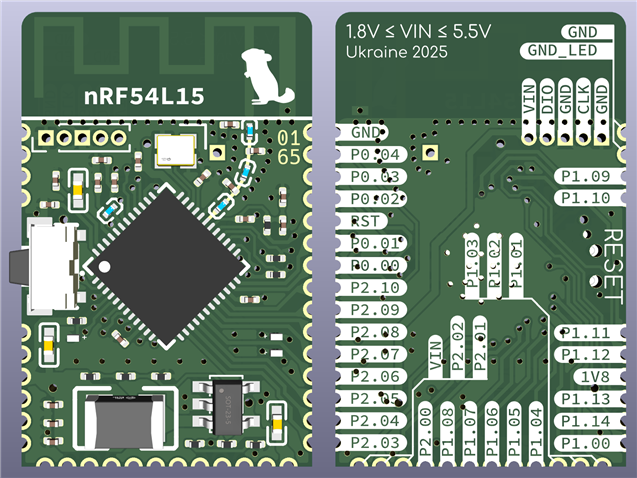Hi there, I've been told on Reddit that I can post my design here to receive more relevant feedback.
I'm making a module with nRF54L15 with an external DC-DC regulator to keep the efficiency at maximum.

The MCU schematic is mostly a copy-paste of the reference design, the layout isn't though.
I would appreciate any comments and criticism!
Github (KiCad): https://github.com/efogdev/nrf54l15-module
KiCanvas: https://kicanvas.org/?github=https%3A%2F%2Fgithub.com%2Fefogdev%2Fnrf54l15-module
Just pictures: https://postimg.cc/gallery/8j2K1C9 (edit: please use github and kicanvas as some changes have already been made).
P.S. One more question, am I doing something wrong? I have never seen an antenna trace so thin, usually it's 0.3mm and more. 0.12mm looks weird to me. Also if I use another calculator, I get value of 0.19mm.



